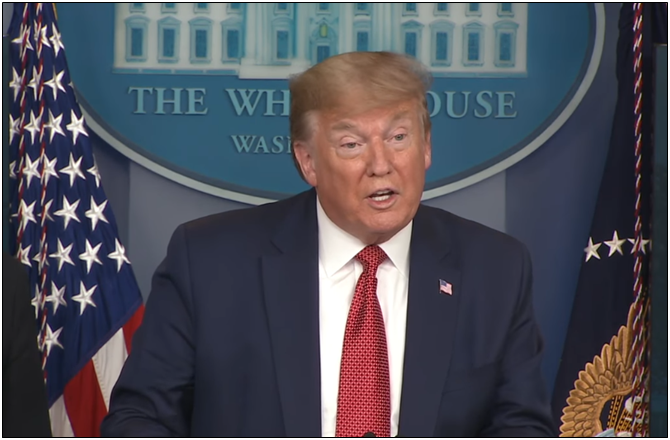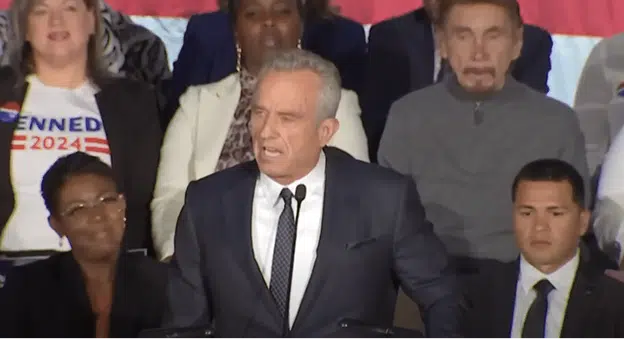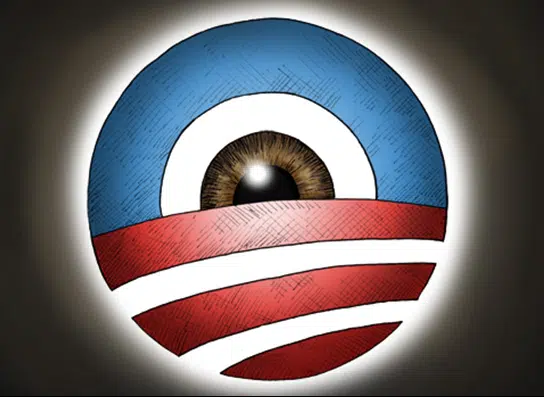President Donald Trump, Vice President Mike Pence and the White House coronavirus task force have unveiled the administration’s strategy and recommendations for reopening America in three phases, community by community and state by state at a time of their choosing so that America’s way of life and economy can get back to normal as soon as possible.
First, the good news from the task force. Hundreds of thousands of lives have already been saved, when the original projections said as many as 2 million might have perished if nothing had been done. And, the daily number of cases has apparently peaked nationally, too, the President reported.
That said, states like New York, New Jersey and Michigan continue to experience great difficulty and many more deaths are to come, but with thousands of ventilators and other medical supplies in high-scale production, the supply mercifully kept up with the demand, and we are past peak hospital usage. The surge that was feared is now in the past.
The President’s mitigation strategy has worked and he, his team, all 50 states and the American people have combined their efforts and have appeared to defeat the model’s most dire projections and even the more modest ones.
Now, with the recommendations being issued to every state, a gradual layered approach will be implemented, based on local situations, to reopen America piece by piece.
“We are not opening all at once, but one careful step at a time,” President Trump said.
It truly is a case study in federalism, with national leadership, guidance and resources, and state and local execution and implementation, with decision-making remaining where it should with state governors.
Under the guidelines, to enter phase one, first, states must demonstrate 14 days of downward trajectory of both influenza-like illnesses and COVID-19, with no rebound. As the task force noted, many states are already in a downward trajectory, and could be days away from entering phase one or already prepared to enter phase one. President Trump noted in 850 counties, or 30 percent of the nation’s counties have reported no new cases for the past week.
In phase one, schools remain closed, as do nursing homes from visitors. The elderly and those with underlying conditions continue to shelter in place. Telework continues. Non-essential travel is still blocked. It would be a lot like the period we’ve just lived through.
Next, if 14 more days of downward trajectory continues, with no resurgence, then the state would enter phase two. Schools could reopen, but nursing homes would still remain closed to visitors. Vulnerable populations would still shelter in place. Social distancing in public would continue. Telework would continue if possible. Non-essential travel restrictions would be lifted. Employers that do reopen would keep common areas closed.
After another 14 days of fewer new cases, then the state would enter phase three. Vulnerable populations could reenter the public, but should still minimize exposure to large crowds and engage in social distancing. Nursing homes could reopen to visitors, but with strict hygienic guidelines. The remaining employers can reopen.
So far, there do not appear to be any governors who are just going to go it alone and breach the guidelines. Every governor across the entire country appears to support the guidelines.
Some states will be ready for phase one right now, the President stated, with announcements expected soon. The sooner the better, since their experiences will advise and pave the way for larger states in the coming weeks. Many more will be ready by the end of April or so. And perhaps the rest by mid-May the earliest.
But that means by mid-May, a lot of states are hopefully in phase two and by June, back to being reopened. The rest, which includes all of the largest states as well as all the major metro areas, would perhaps enter phase two by June, and be reopen by mid-June the earliest.
And that’s all assuming there’s no resurgence. There’s a lot of if in that plan.
Now, the bad news. At the current rate of job losses, another 20 million or so jobs could be lost between now and then, and heaven help us if the losses continue rising after that. Effective unemployment could exceed the Great Depression’s 25 percent by mid-June if not sooner.
This phased, state-based approach was the way we closed, and that’s how we’ll reopen, but the economic consequences of the closures were always going to be catastrophic and largely unavoidable. I find it striking that not one large state with a major metropolitan area took its chances as not a single governor opposed these actions a month ago.
Look around the world, and it’s much the same story. Economies everywhere have crashed as countries across the planet have responded similarly.
This is the equivalent of the global economy being struck by an asteroid. It will take years or even a decade to recover what has been lost and will be lost for the next month and a half while this goes on, and then all the months after that. These economic outcomes we are experiencing were inevitable given these circumstances. Shouting at the asteroid not to hit us was never going to work.
So, where do we go from here?
Usually it takes about 11 months to lose all your jobs in a recession, and another 16 months to get them back, although in the Great Recession it took 25 months to lose all the jobs and another 57 months to get back the 8.3 million jobs that were lost. How long will it take to get back the 22 million jobs already lost?
Risks going forward include property values that could start plummeting — anyone looking to buy a home right now? — millions of homeowners could be about to fall behind on their payments, millions of small businesses are about to fail, and with tens of millions of fewer taxpayers, state and local governments could be about to run out of money, and so municipal debt markets are about to be tested and so forth. We’re not out of the woods yet.
We are winning the war on the virus, but the resulting recession could be the worst in our lifetimes in terms of unemployment. We are not only going to need ways to incentivize businesses to reopen but, really, to restart. While the closures were all rather similar, what governors, Congress and the President do next is probably a lot more important. Sadly, the economic impacts may have been inevitable. The real question is how do we get back?
Robert Romano is the Vice President of Public Policy at Americans for Limited Government.








